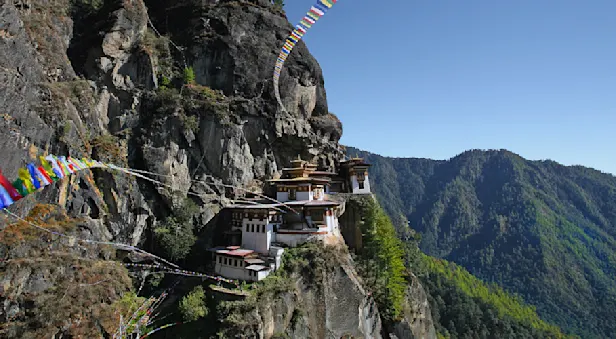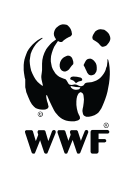What to Pack for Bhutan & Nepal
The following packing list contains general recommendations for a trip to Nepal and Bhutan. If you are currently booked on a Bhutan and Nepal tour with Nat Hab, please consult your pre-departure materials for the most up-to-date packing list specific to your trip. You will receive these pre-departure materials 60-90 days before your departure.
Items indicated in color below are typically available in the Nat Hab Gear Store. Please note that due to global supply chain issues beyond our control, we cannot guarantee that every item will always be in stock.
Adventure Guidelines
We encourage you to take into account local attitudes toward modesty and propriety. Your style of dress will, in part, determine your acceptance by, and interaction with, local people. Always check with your guide concerning proper dress code for the day’s activities.
While you may see other tourists wearing these items, in general, shorts and tank tops (clothing that reveals your knees and shoulders) are considered disrespectful and are not culturally appropriate at any time. This is especially true for women.
Wearing modest clothing is especially important in temples and monasteries. Shorts or other revealing items should never be worn.
Be prepared for possible afternoon showers; lightweight, waterproof raingear is essential.
Thimphu and Paro are situated at elevations of 7,000 to 8,000 feet. When the sun sets over the surrounding mountains, the temperatures drop quite rapidly. You will need to bring layers of clothing, so you can add or subtract as the weather warrants.
February and early March departures can be considerably colder than late season departures. If traveling during this time, we highly suggest bringing warmer gear that can be worn in multiple layers. A warm hat and gloves are also essential.
Thailand is quite hot and humid throughout the year. A change of lightweight clothing will make you more comfortable if you are spending time in Bangkok after the trip.
Hairdryers are available at all accommodations.
Clothing
Rain gear
—Although our adventure takes place in the winter after monsoon season has ended it is possible to encounter inclement weather. We recommend bringing durable, lightweight, fully waterproof (not just water-resistant) rain gear, including a jacket with hood and rain pants.Lightweight down jacket
—This is especially important for early season trips beginning February through mid-March. You will most likely not need a down jacket if traveling in April.Warm, windproof fleece
—One that can be layered under your jacket is ideal.Sturdy walking shoes / sport sandals
—Bring comfortable shoes that are appropriate for walks and wildlife drives. They should be broken in to prevent blisters.
—Closed-toe shoes are recommended for cooler months, while sport sandals work well for later season departures as temperatures warm up. Water-resistant shoes may be helpful if we experience any inclement weather2–3 pairs of long pants
—Long pants are helpful for sun protection during wildlife drives.1 pairs of shorts (optional)
—For late season departures. They Shorts will generally be unnecessary should we experience normal temperatures in early season departures.Long skirt for women (optional)
Light sweater
Long underwear (top and bottom)
—Good to have for early morning wildlife drives if you get cold easily. This is especially handy for trips from February to mid-March.Extra pair of comfortable shoes (to wear after outdoor excursions)
—To wear after outdoor excursions.Socks
—Bring socks made of wool or other moisture-wicking material; cotton socks are not recommended for longer walks.
—As you will need to remove your shoes while visiting temples and monasteries, and floors in these public places tend to be cold and very dirty, you may also wish to bring an old pair of socks you can wear during these outings and throw away after the adventure.Scarf (optional)
—This can be helpful if you wear sleeveless shirts and would like to have something on hand to quickly wrap around your shoulders while visiting temples and monasteries.Underwear
Sleepwear
—It can be chilly at night at some of the lodges during the early season.Slippers (optional)
—Floors in the hotels and lodges can be cold.Swimsuit (optional)
—Dwarika’s Hotel in Kathmandu, as well as the Novotel Airport Hotel in Bangkok (if applicable) have swimming pools. You may also wish to enjoy a traditional hot stone bath while in Bhutan.Neck buff
—Nat Hab will provide this for protection from dust while on wildlife drives.Instant cooling scarf (such as EnduraCool)
—Nat Hab will provide neck coolers for guests traveling on late March and April departures.2–3 long-sleeved shirts
—The number you will need will depend on temperatures at the time of your specific departure.
—Helpful to shield you from insects and the sun during wildlife drives throughout the year.2–3 short-sleeved shirts
—The number you will need will depend on temperatures at the time of your specific departure. These may not be needed in early season departures.Hat, gloves, scarf or fleece neck gaiter
—Good to have for cold morning wildlife drives and for use at higher elevations, particularly in the early season.
Additional Items
Cash
—For discretionary gratuities (you may want to bring envelopes for discreet presentation).
—For personal spending (souvenirs, Internet use, or food and beverages not included in your trip fee).
—For airport transfers if you are staying at an accommodation other than Dwarika’s Hotel in Kathmandu.
—$30 USD if you are obtaining your Nepal visa upon arrival in Kathmandu.Headlamp or small flashlight
—Power outages are not uncommon in this part of the world. Carry spare batteries.
Small, water-resistant daypack
—To carry gear and personal belongings during outings.
Binoculars
—Binoculars are a huge asset on this adventure and are highly recommended. For optimal viewing, we suggest those with specs between 10x42 and 8x42. You may even try 8x35, but only if they contain high quality glass. Practice using your binoculars before your trip to make sure they are not too powerful or you do not have trouble holding them steady.Reusable water bottle (included in your pre-trip package)
—In our continuing effort to operate our adventures with as little impact on the environment as possible, you will receive a reusable water bottle (unless you opted out on your Booking Form) to take with you on your adventure. We will provide drinking water throughout the adventure for you to refill your bottle. By doing this, you will avoid using multiple disposable plastic bottles.Small, compact umbrella
Sunglasses (with UV protection)
Prescription glasses/contact lenses
Earplugs
Toiletries in reusable bottles to minimize waste
Insect repellent and anti-itch ointment
—Repellents containing DEET are the most effective against mosquitoes, but please be aware that DEET is a very strong ingredient which can damage plastics, clothing and equipment.Sunscreen and lip balm (at least SPF30)
—Bring protection for your hands, face and lips, as the sun at altitude can be intense.Melatonin
—To help ease effects of jet lagToilet paper
—As toilet paper is not always available in public restrooms (i.e. at the airport), you may want to keep a roll in your daypack. Take out the center roll for easier packing.Dry bags or reusable waterproof bags
—Great for wet or dirty clothing and to protect camera equipment from the elements.Small calculator
—For currency conversionElectrolyte/flavor crystal packets (optional)
—Can be added to water to replace fluids in case of intestinal illness and/or enhance the taste to encourage hydration.Quick-drying washcloth
—You may wish to bring a washcloth if you prefer to use them, as they may not be provided by all accommodations.Drain stopper and detergent (optional)
—Helpful if you would like to hand wash any clothing items at our accommodations.
Hiking poles (optional)
—Walking sticks are available for guest use for nature walks in Chitwan National Park, and hiking poles will be provided for use while in Bhutan.
—If you prefer to bring your own poles, make sure they fit in your checked baggage, as you generally will not be allowed to carry them on the plane.
Header Credit: Aditya Dev
See South Asia's Wildlife on These Trips

Wild & Ancient Himalaya: Nepal & Bhutan
Explore mountain heights and jungle lowlands on this soulful journey through the cultural and wildlife treasures of two neighboring Himalayan nations—including rhino tracking in Chitwan National Park.































